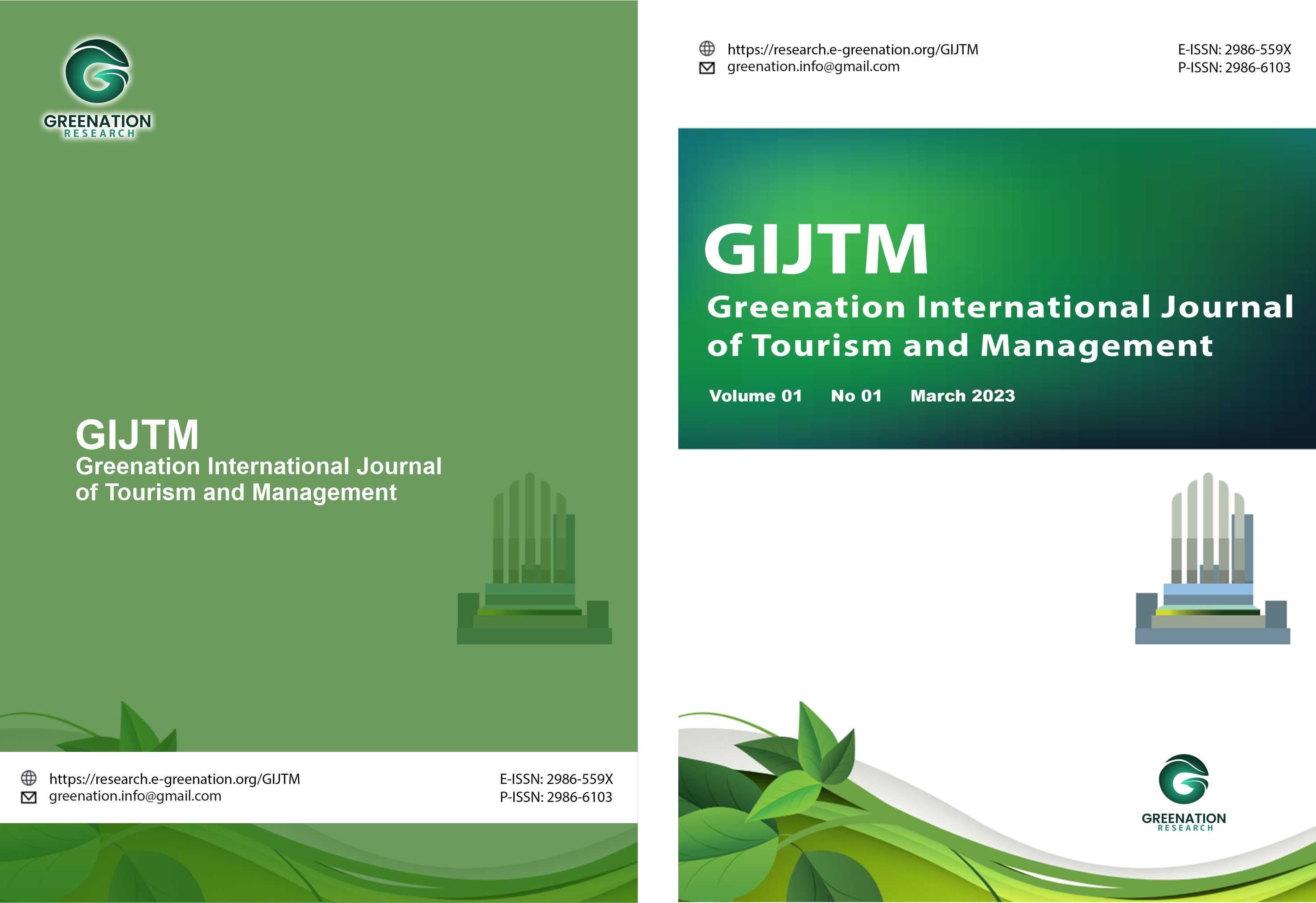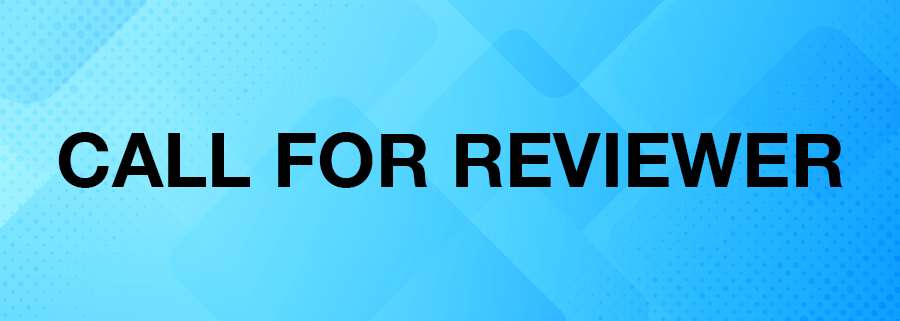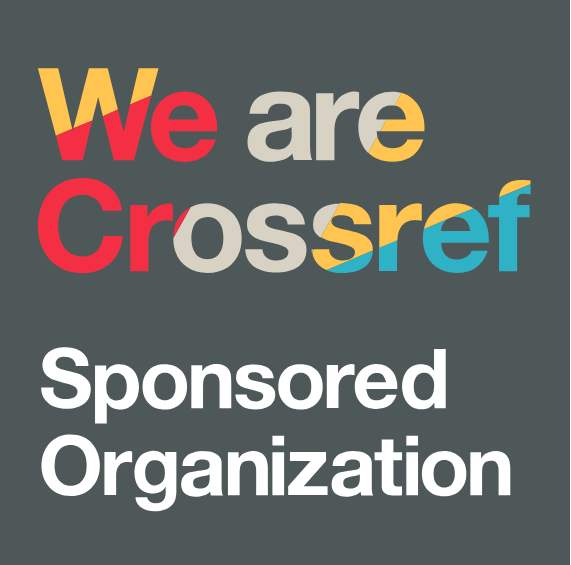
Plagiarism Policy
The Editorial Board of the Greenation International Journal of Tourism and Management (GIJTM) acknowledges that plagiarism is unacceptable and has therefore established the following policy stating specific actions (penalties) after identifying plagiarism/similarity in articles submitted for publication on GIJTM.
GIJTM will use Turnitin Plagiarism originality checking software as a tool for detecting text similarities in article manuscripts and the final version of the article that is ready for publication. A maximum of 25% similarity is permitted for submitted papers. If we find more than 25% of the similarity index, the article will be returned to the author for correction and resubmission.
- Definition: Plagiarism involves "the use or cover-up of artificial language and thoughts of other authors and their representation as one's original work."
- Policy: Papers must be original, unpublished, and not awaiting publication elsewhere. Any material taken verbatim from other sources must be identified as different from this original text by (1) indentation, (2) use of quotation marks, and (3) reference to the source.
Any text with an amount that exceeds fair use standards (here defined as more than two or three sentences or its equivalent) or graphic material reproduced from other sources requires permission from the copyright holder and, where applicable, the original author and also requires assistance. source; e.g., previous publication.
When plagiarism is identified, the Editor-in-Chief is responsible for reporting this paper and will approve steps according to the level of plagiarism detected in the paper according to the following guidelines:
Plagiarism Rate
- Minor: Short sections of other articles are plagiarized without significant data or ideas taken from other papers.
- Action: A warning is given to the author and a request to amend the text and properly cite the original article is made.
- Medium: Most of the paper is plagiarized without citations that match the original paper.
- Action: The submitted article is rejected and the author is prohibited from submitting further articles for one year.
- Severe: Most papers are plagiarized which involves reproducing original results or ideas presented in other publications.
- Action: This paper is rejected and the author is prohibited from submitting any further articles for five years.
It is understood that all authors are responsible for the content of their submitted papers as they all read and understand the GIJTM Copyright and Licensing Terms. If punishment is penalized for plagiarism, all authors will be subject to the same penalty.
If a second case of plagiarism by the same author is identified, a decision on the action to be enforced will be made by the Editorial board (Chief Editor and Editorial members) with the Chief Editor in Chief. Authors are prohibited from submitting further articles forever. This policy also applies to material reproduced from other publications by the same author. If an author uses previously published text or graphics, the appropriate paragraph or figure should be identified and the previous publication referenced. It is understood that in the case of presentation papers or tutorial papers, much of the material is previously published.
Authors must identify the source of previously published material and obtain permission from the original author and publisher.
If an author submits a manuscript to GIJTM with significant overlap with a manuscript submitted to another journal concurrently, and this overlap is discovered during the reporting process or after the publication of both papers, the editor of the other journal is notified and the case is treated as a serious case of plagiarism. Significant overlap means the use of identical or nearly identical numbers and identical or slightly modified text on one-half or more of the paper. For self-plagiarism of less than half a paper but more than a tenth of a paper, the case must be treated as intermediate plagiarism. If the plagiarism is limited to the method section, this case should be considered minor plagiarism.
If an author uses some previously published material to clarify the presentation of new results, the previously published material should be identified and the differences between these publications should be noted. Permission to republish must be obtained from the copyright holder. in the case of a manuscript originally published in the conference proceedings and then submitted for publication in GIJTM either in identical or expanded form, the author must identify the conference proceedings' name and date of publication and obtain permission to republish from the copyright holder. The editor may decide not to accept this paper for publication.
However, an author is permitted to use material from an unpublished presentation, including visuals, in a subsequent journal publication. In the case of published publications, which were originally published in another language, the title, date, and publication date of the original publication must be identified by the author, and the copyright must be obtained. Editors may accept the publication of such translations to appeal to a wider audience. Editors can select certain published papers (e.g. “historic” papers) for republication to provide a better perspective of a series of papers published in a single issue of GIJTM. This republication must be identified and the date and journal of the original publication must be given, and permission from the author and publisher must be obtained.
The GIJTM layout editor for Journals is responsible for maintaining the list of penalized authors and will check that there are no authors of submitted papers in this list. If a banned author is identified, the layout editor will notify the Chief Editor who will take appropriate action. This policy will be posted on the website with instructions for submitting the manuscript, and the recovery will be sent to the author with an email confirmation upon initial receipt of their original manuscript.

























